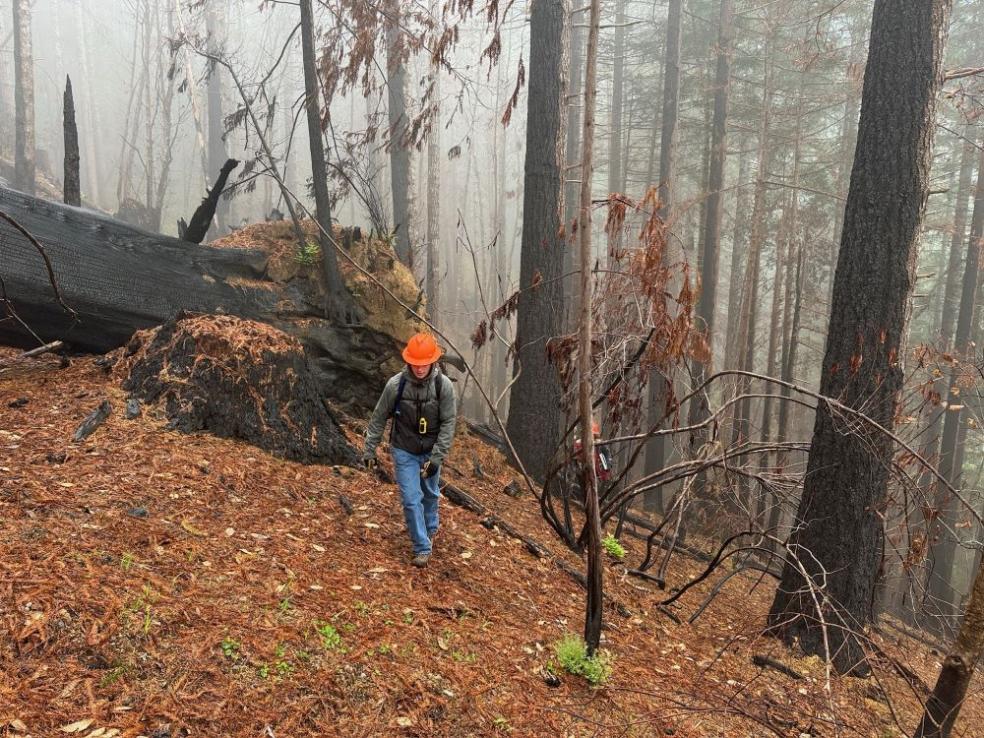Newswise — This research is not only significant for its contribution to understanding fire ecology in redwood forests but also for its potential to guide future management practices. The findings could inform decisions on the use of restoration thinning and controlled burns as tools to enhance forest resilience to wildfires, ultimately supporting the long-term goal of promoting old-growth conditions in Redwood National Park.
The Lost Fire, ignited by lightning in Redwood National Park in 2023, provided a unique opportunity to assess the effectiveness of thinning treatments that have been progressively implemented across the park over the past few decades. Most of Redwood National Park consists of secondary-growth redwood forests, where old-growth redwoods were harvested long ago. Restoration thinning aims to accelerate the development of these younger forests into mature, complex ecosystems that are ecologically valuable and aesthetically significant.
Restoration thinning involves reducing tree density to allow remaining trees more space and resources to grow larger and healthier. However, a common concern with thinning is the potential increase in surface fuels—such as dead trees or branches left on the forest floor—which can intensify wildfires. This study seeks to determine how different thinning techniques influence fire behavior and outcomes, particularly in redwood forests that historically often experienced frequent, low-intensity fires.
Redwoods are renowned for their resilience to fire, with thick bark that protects them from heat and the unique ability to regenerate even after significant damage. This resilience is a key focus of the research, as Kane and Joyce aim to understand how thinning treatments affect tree survival, regeneration, and fuel consumption during and after a fire.
The 2023 Lost Fire, which burned approximately 800 acres, presented a natural experiment. It allowed the researchers to compare the effects of various commonly used thinning techniques across different treatment areas. By analyzing tree mortality, regeneration patterns, and fuel changes, the team hopes to provide valuable insights for forest managers.
As Professor Kane says, "Science often confirms what we observe, but rigorous data collection is essential to advance our knowledge and improve our management strategies." The results of this study will contribute to the broader effort to restore and protect the iconic redwood forests for generations to come.


